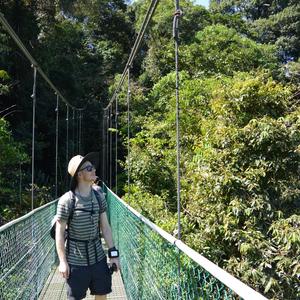Following the Silk Road is one of the best ways to see a whole lot of history in one trip. This network of trade routes is a UNESCO World Heritage Site, significant from around 114 BCE to the mid-15th century. Spanning over 4,000 miles, it's not exactly easy to take it all in at once. But each country along this ancient route has something special to offer. The Uzbekistan Silk Road portion is unmissable, offering numerous incredible sights for lovers of history, travel, culture, and more.
By exploring the fascinating sites along this once-important Silk Road trading route, you can see this Central Asian country in a unique and unforgettable way. We've highlighted the top cities to visit in Uzbekistan and the sights to take in along the way. Take a look at our The Silk Road tour collection for epic journeys through Uzbekistan, Tajikistan, Kazakhstan, China, and beyond.
Samarkand
Samarkand is one of the oldest continuously inhabited cities in Central Asia. This beautiful city has a lot to offer curious travellers, including some stunning sights that are important markers along the Silk Road.
The Registan
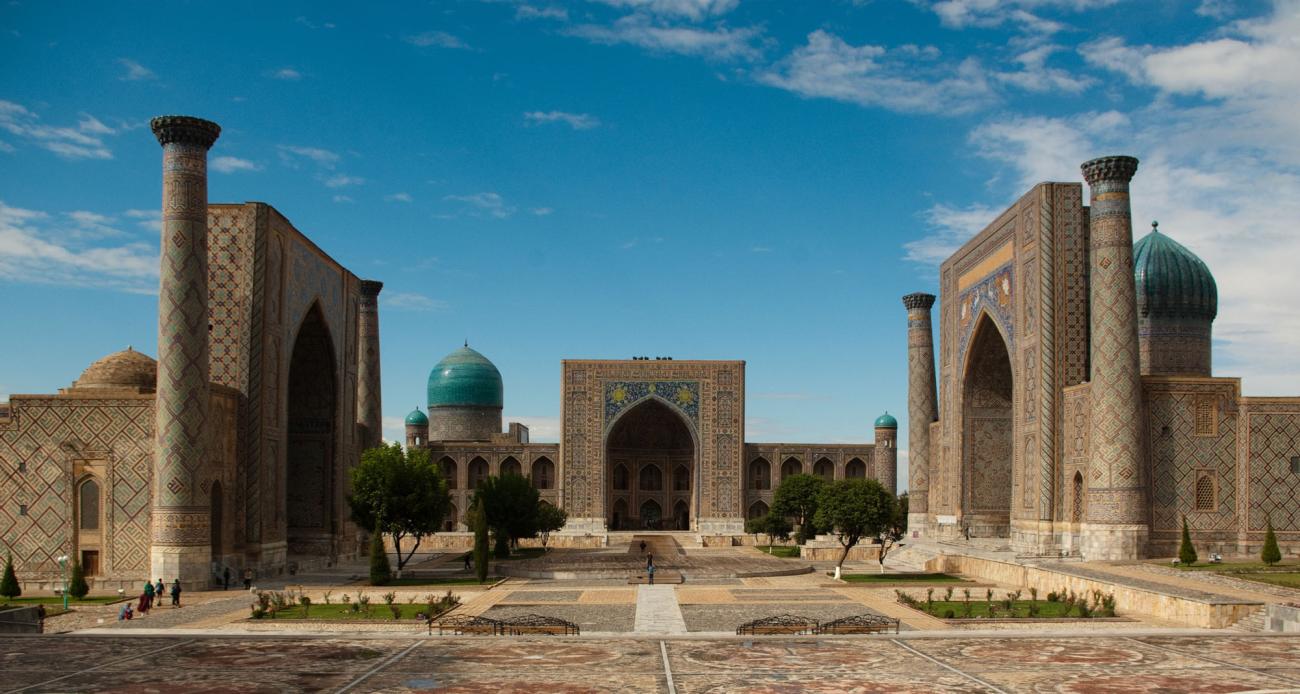
When the ancient city of Samarkand was part of the Timurid Empire, the Registan was at its heart. Meaning desert in Persian, the Registan was once a public square where local people would gather to hear royal proclamations. Today, it's an eye-catching location where you will find fascinating architecture, including three madrasahs (madrasah is an Arabic term for school) built in the 15th and 17th centuries.
The Ulugh Beg Madrasah, Sher-Dor Madrasah, and Tilya-Kori Madrasah all present grand facades and opportunities to explore the interior too. The central square is lit up at night for an even more impressive display. The Ulugh Beg Madrasah is the oldest surviving building in the city, built between 1417 and 1421. Other buildings include the 16th-century mausoleum of Shaybanids and the 18th-century Chorsu trading dome.
Gur-e-Amir
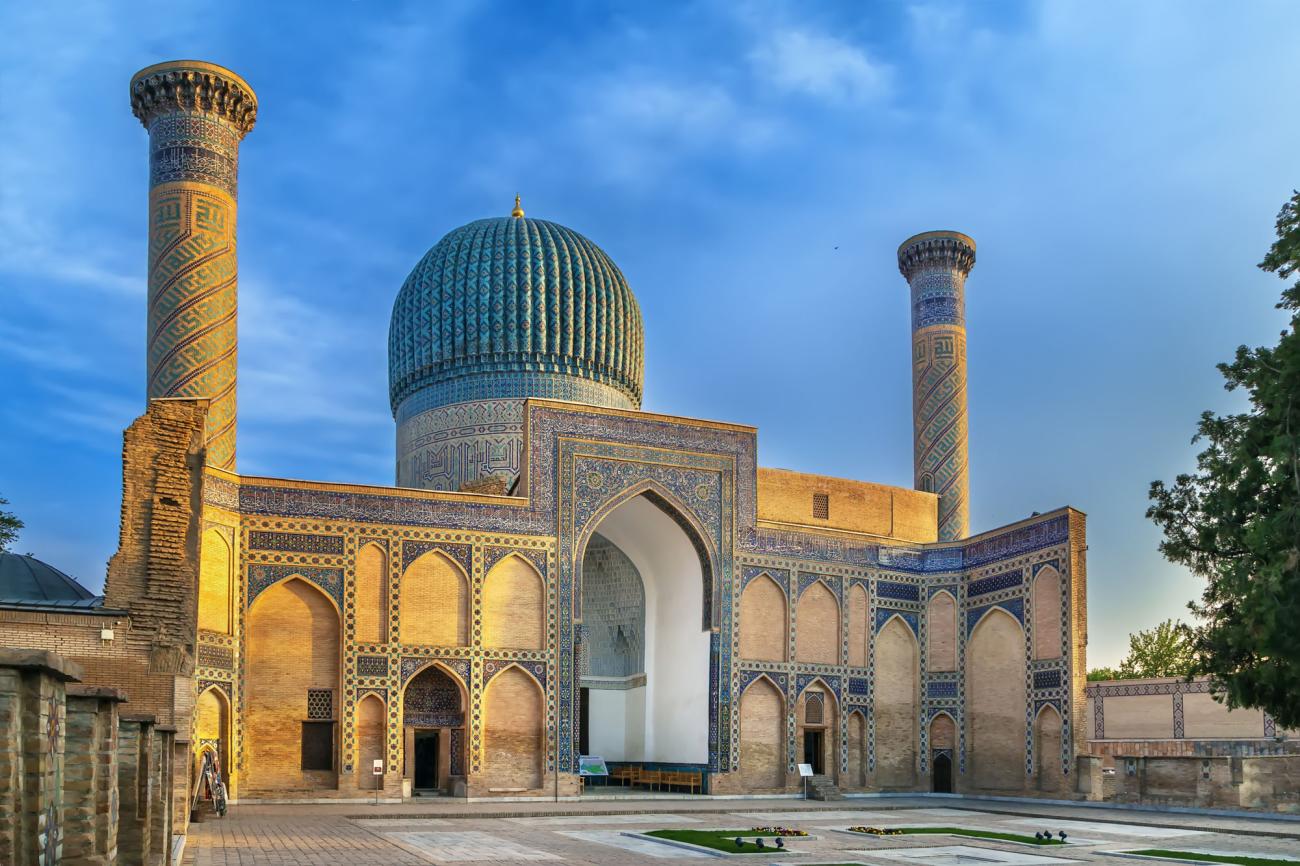
Gur-e-Amir is a mausoleum, built between 1403 and 1404. With a name meaning "Tomb of the King", this building is significant in Central Asian architecture, later influencing Mughal architecture in Afghanistan, India, and other locations. The mausoleum contains the tombs of Tamerlane (Timur), founder of the Timurid Empire, his sons Shah Rukh and Miran Shah, and his grandsons Ulugh Beg and Muhammed Sultan. His teacher Sayyid Baraka is also buried there.
Over time, different parts were added to this complex by Timur's sons and grandsons. Outside, it is fairly simple in its construction, although beautiful with its azure dome and blue and white tiles. Inside, it's highly decorated with everything from onyx slabs painted with fine details to papier mache cartouches that have been gilded and painted.
Shah-i-Zinda
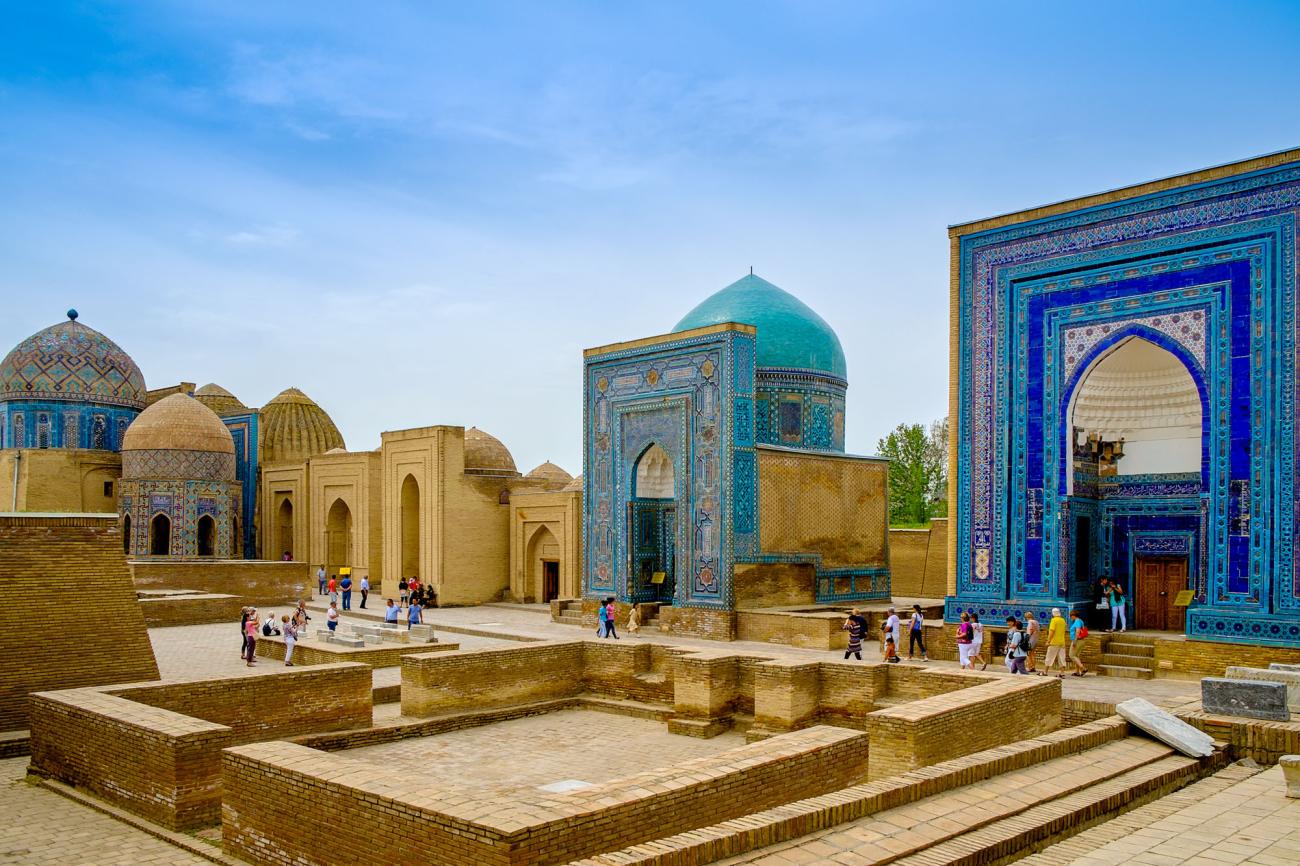
The Shah-i-Zinda necropolis is one of the many must-see sights in Samarkand. Shah-i-Zinda includes mausoleums and other ritual buildings that span the 11th-15th centuries and the 19th century. There is a legend that a cousin of Muhammad, Qutham ibn Abbas is buried here, having come to Samarkand to preach Islam in the 17th century. The name of the site means "the living king" in reference to this. There are more than 20 buildings in the whole complex, split into three groups and connected by domed passages called chatrak.
The stunning tilework is arguably the main draw of this site, much of it dating from the 14th century and 15th century. The Shodi Mulk Oko Mausoleum, built in 1372, is often noted to be the most beautiful of the tombs. It's the resting place of a sister and niece of Timur.
Bibi-Khanym Mosque
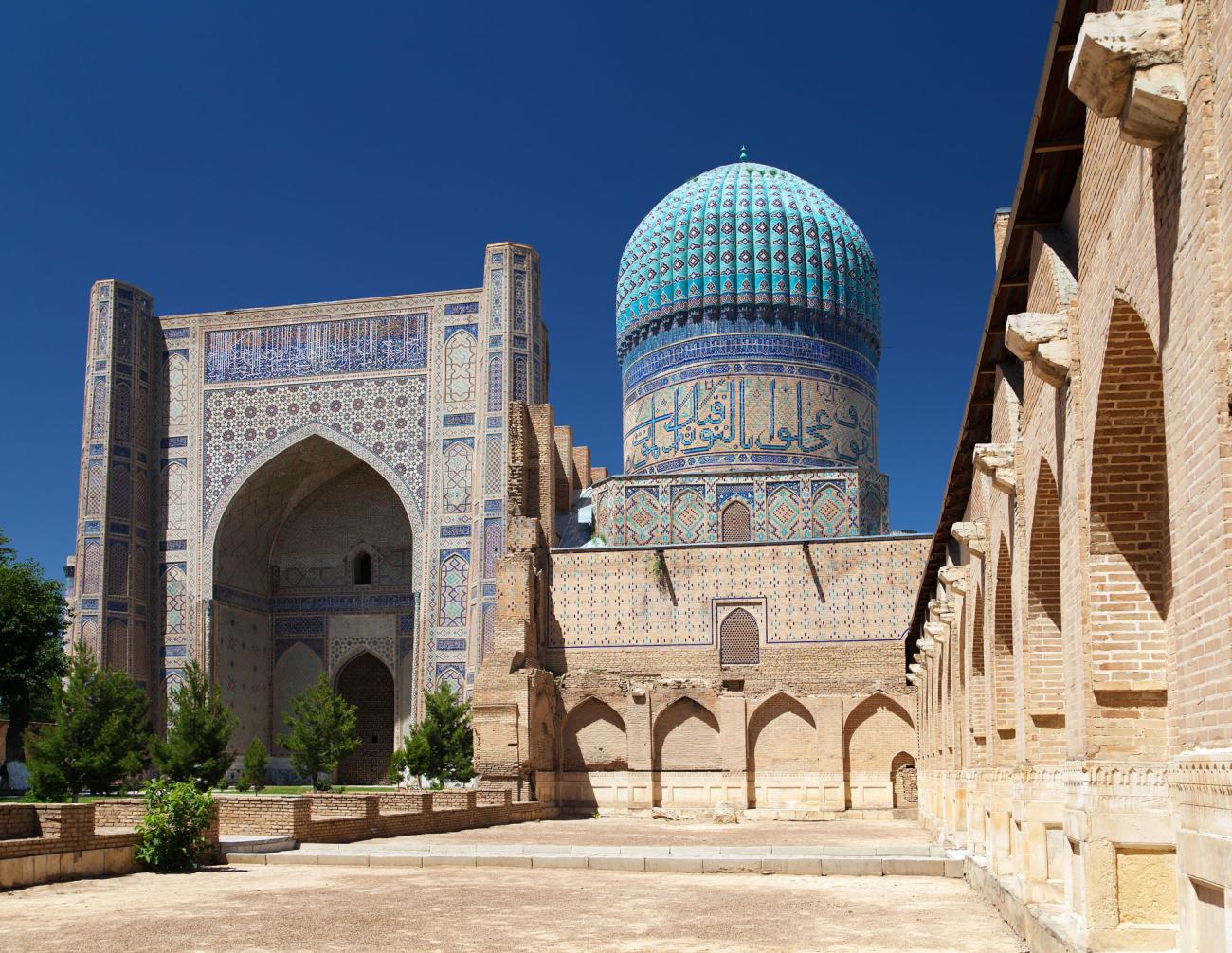
You will find no shortage of exquisite mosques throughout Uzbekistan. The Bibi-Khanym Mosque definitely shouldn't be missed while you're in Samarkand. Completed in 1404, this awesome structure is really a sight to behold. It was built for Timur's Chinese wife Bibi Khanym, with two of the original structures still standing (the third was destroyed by invading Persian troops in 1740). However, much of what you see today is also 1970s reconstruction, which makes for an interesting visit.
The site holds the mosque and a mausoleum, which is said to have been built in honour of Bibi Khanym's mother. Bibi Khanym (Sarai Mulk-Khanym) is buried here along with two other women from her family.
Bukhara
The ancient city of Bukhara has been one of the most important trading centres in the country for thousands of years. It is also a place of culture, scholarship, and religion. Samarkand and Bukhara were both at the centre of Persian culture until the end of the Timurid dynasty.
Kalyan Mosque & Minaret
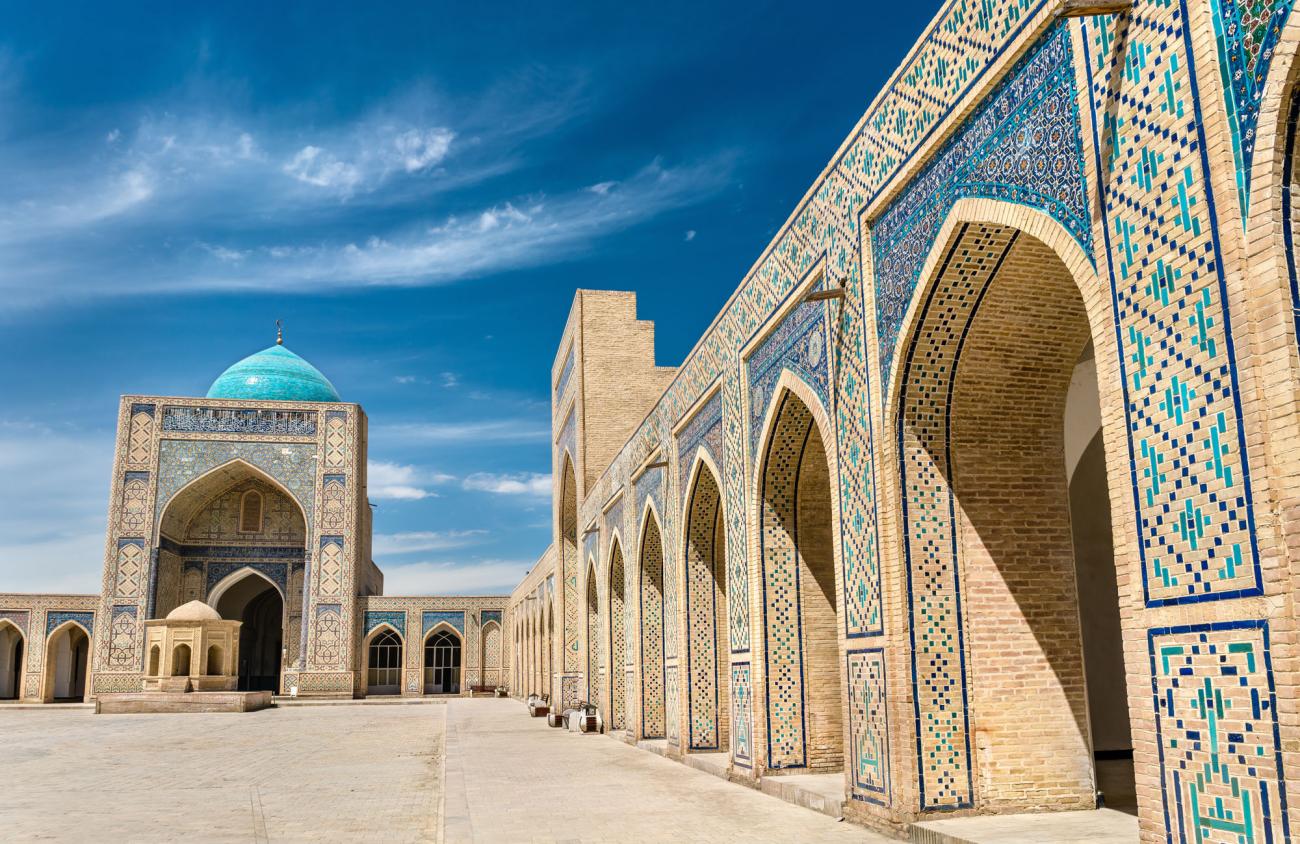
The Po-i-Kalyan ("At the Foot of the Great One") mosque complex has three main parts, which are all worth seeing. It consists of the Kalyan mosque, the Kalyan minaret, and the Mir-i-Arab Madrasah. A square courtyard connects these three structures, with a bazaar and baths enclosing it. The mosque is one of the largest in Asia. The original mosque and minaret date back to the 12th century, but the mosque was destroyed by Genghis Khan, and a new one commissioned in 1515. This replacement, along with the madrasah built at the same time, is still standing.
The Kalyan minaret is a prominent landmark, visible from many places in the Silk Road City. It's so impressive that Genghis Khan ordered it to be spared when its surroundings were destroyed. So it's definitely worth visiting!
The Ark
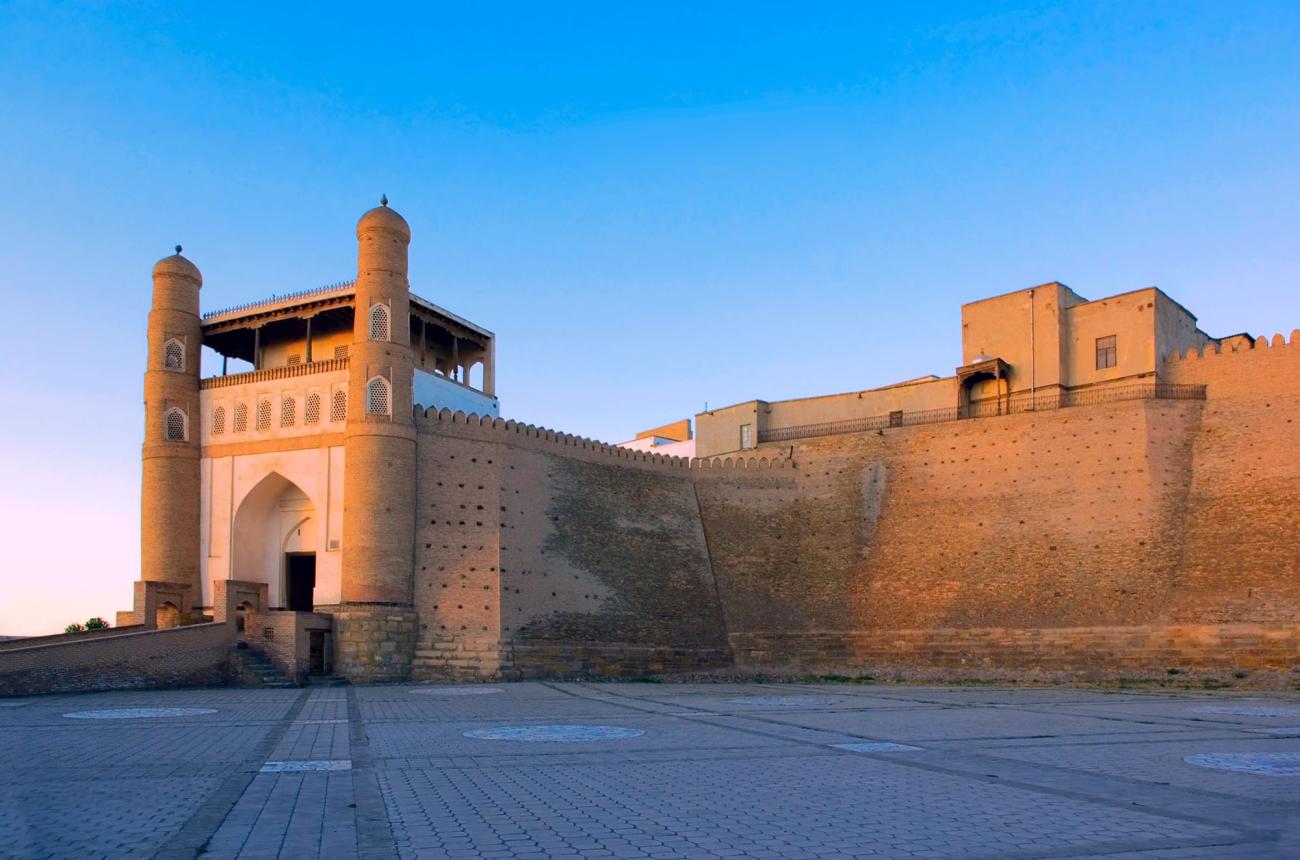
The Ark of Bukhara is a huge fortress that dates back to the 5th century. It wasn't just a military structure but also enclosed a sprawling town that has been home to royal courts and had influence over the city. Additions have been made to the fortification over time and today it's a popular tourist attraction with museums. As soon as you stand at the entrance, with its 18th-century towers, you'll want to explore further.
Some of the things you can see once inside include an archaeological museum, throne room, local history museum, and mosque. The mosque is one of the best-preserved structures in the complex. Legend says the Ark was built by the epic hero Siyavush to gain the hand in marriage of the local ruler's daughter.
Char Minar
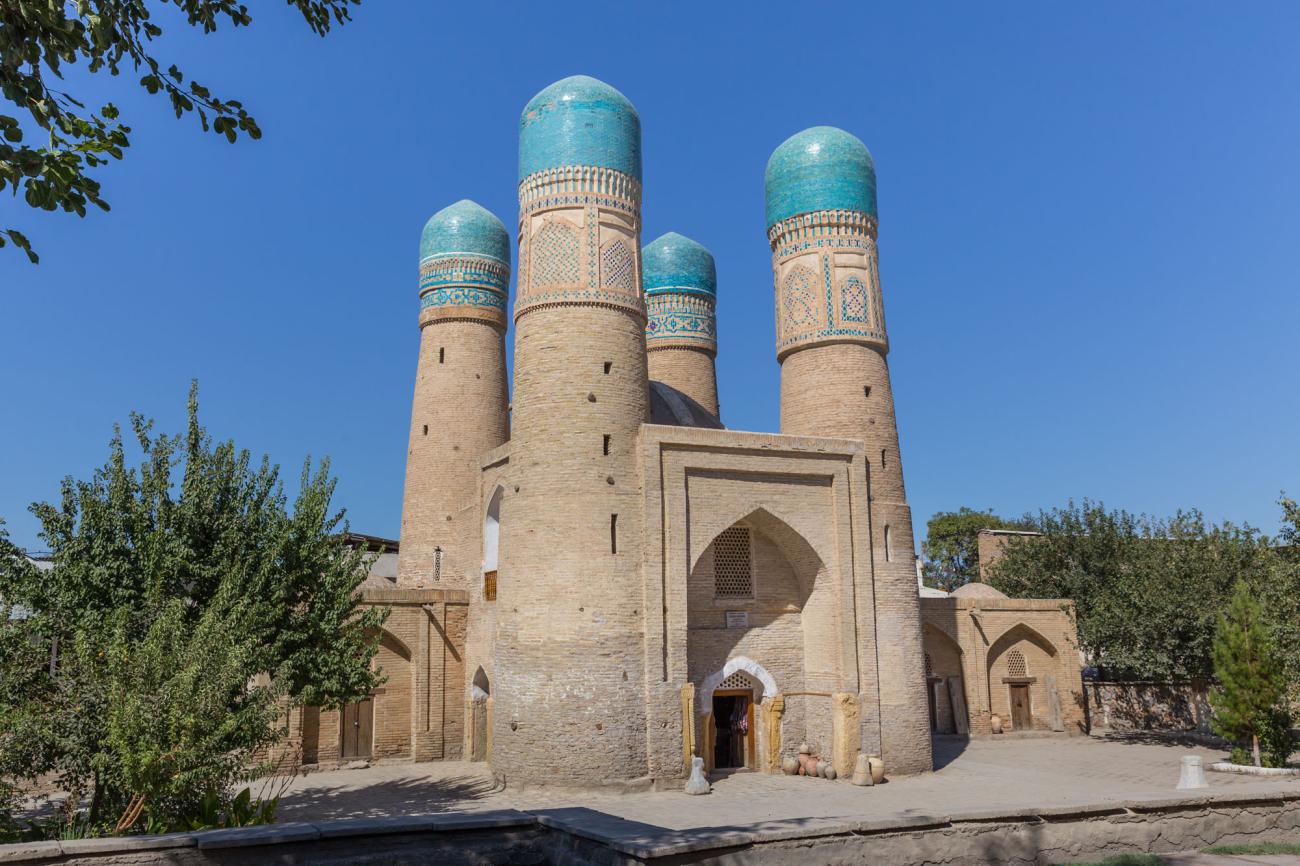
Char Minar (or Chor Minar) is a fascinating part of the city to explore while you're in Bukhara. It used to be the gatehouse of a madrasah, built in 1807. Today, you can see the building and even climb up onto its roof. The name means "Four Minarets", although it technically features four decorative towers that aren't really minarets. Each of the four towers is topped with decorative blue tiles and some say that they reflect the four main religions in the region. You can find references to Christianity, Islam, Buddhism, and Zoroastrianism in their decoration.
This structure is tucked away through winding alleys. It's not surrounded by houses and shops, making it a great place to escape from some of the busier parts of the city.
Sitora–i Mokhi-Khosa
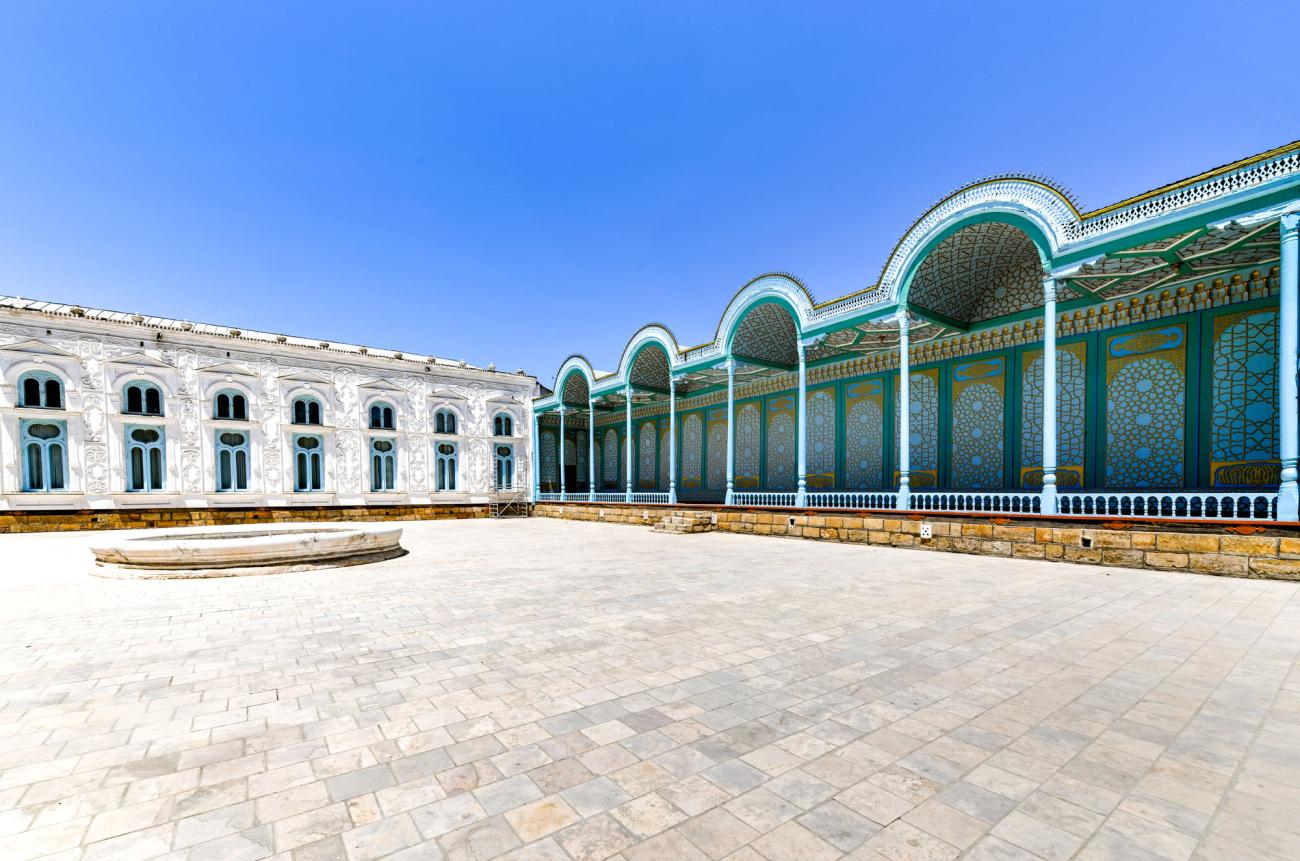
Sitora-i Mokhi-Khosa (Palace Like the Stars and the Moon) was the summer residence of the Emir of Bukhara. It now has a museum of decorative and applied arts. This palace was built in the late 19th and early 20th centuries, so it's a little newer than other prominent sights in the city. The initial construction began in the 18th century but hasn't survived. The newer structure was built in a European style but has an Eastern interior design.
The museum at the palace was first opened in 1927. It has had various displays over time, beginning with three sections that were rearranged and renamed several times. Today, the Museum of Decorative and Applied Arts showcases palace furniture and art, clothing, embroidery, and more.
Khiva
Travelling Bukhara-Khiva (or the other way around) is a popular choice on the ancient Silk Road. Khiva can be traced back to around the 4th or 5th century BCE, having been founded by Shem, a son of Noah, according to legend. Visit Khiva for its architecture and many historic monuments.
Ichon Qala
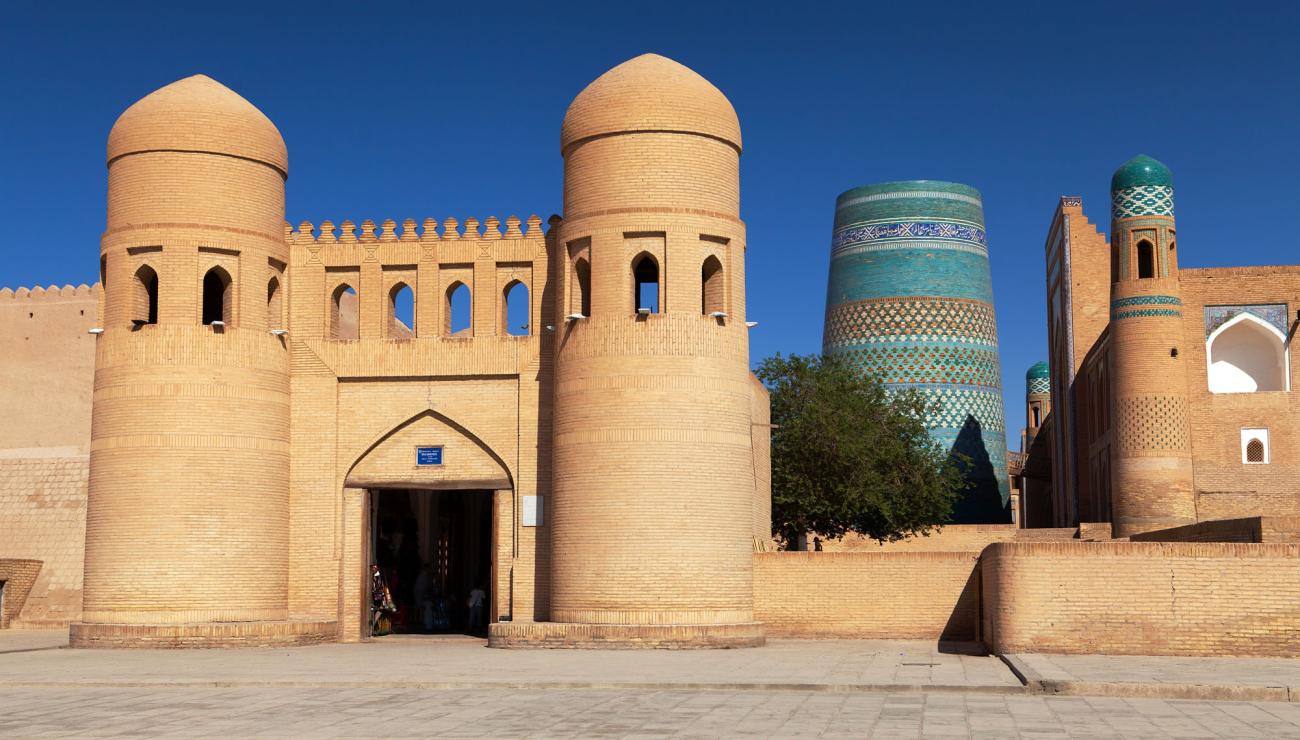
Ichon Qala is a mediaeval walled town that has been beautifully preserved. It's definitely a must-see when you visit Khiva. You could spend a whole day wandering its streets, but even just a few hours can give you a good feel for what the town has to offer. Here you will find mosques, madrasahs, mausoleums, and lots of little museums. The walls are an impressive 10m high and there are over 50 ancient monumental structures.
The history of this town stretches back more than two millennia. It is notable for the contribution of the Khorezmian master builders to Central Asian architecture. The later structures from the 19th and 20th centuries have also been integrated well into the existing town for a harmonious townscape.
Kunya-Ark
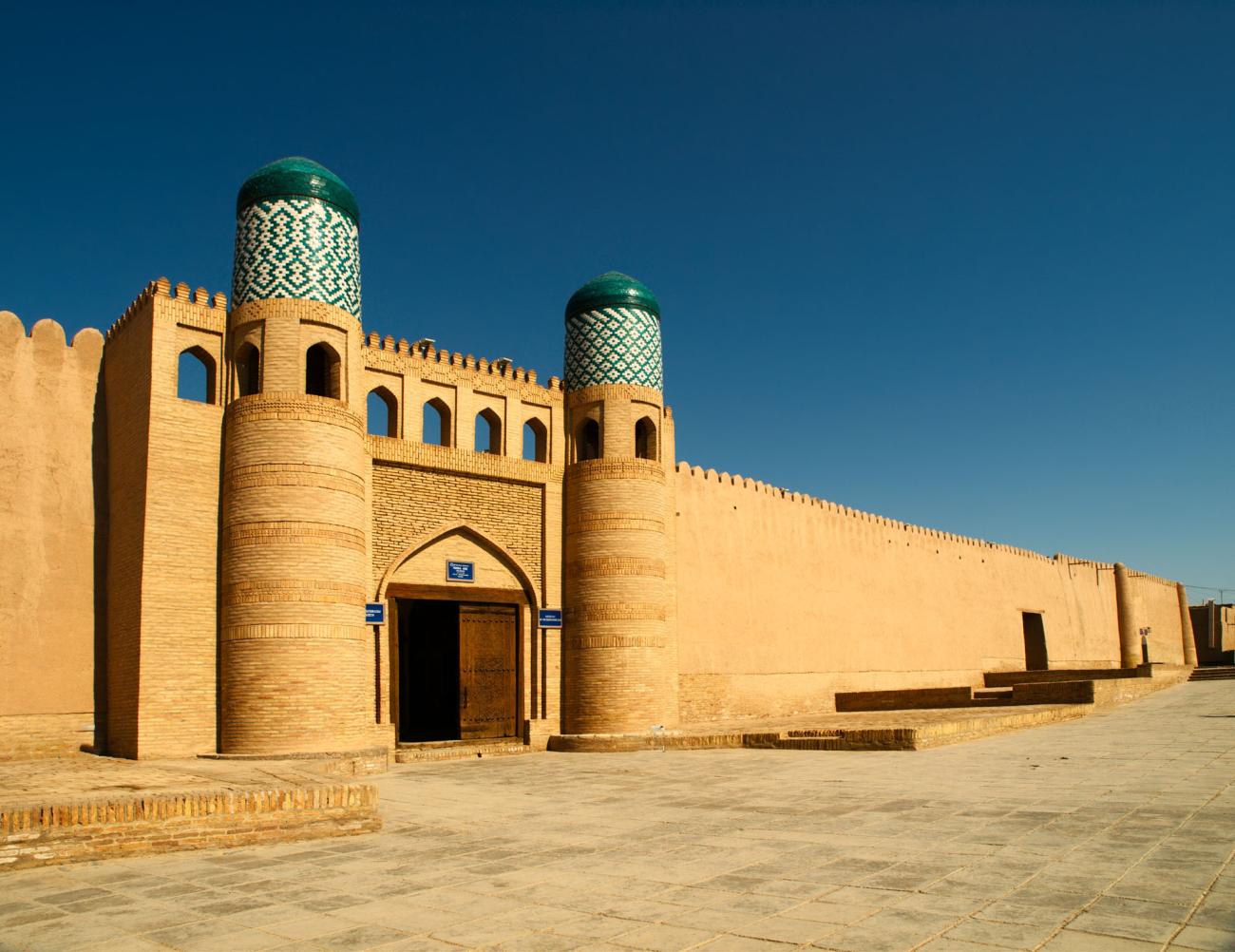
Kunya-Ark is a citadel found inside the walls of Ichon Qala. Found on the west side of the town, it was built in the 17th century by the current Khan of Khiva, Muhammad Erenke. It was first an administrative centre for the Khanate of Khiva and was later expanded. A century later, it included the Khan's mosque and residence, the supreme court, reception area, powder mill, kitchen, stables, harem, and other buildings.
Start at the entrance, with its gate decorated with blue tiles. Past the gate, there's a courtyard and Kurnysh Khan (reception area), which is located on the western side. An iwan decorated with blue and white majolica and a throne room can also be seen. You can also explore the other buildings and structures in the citadel.
Kalta Minor
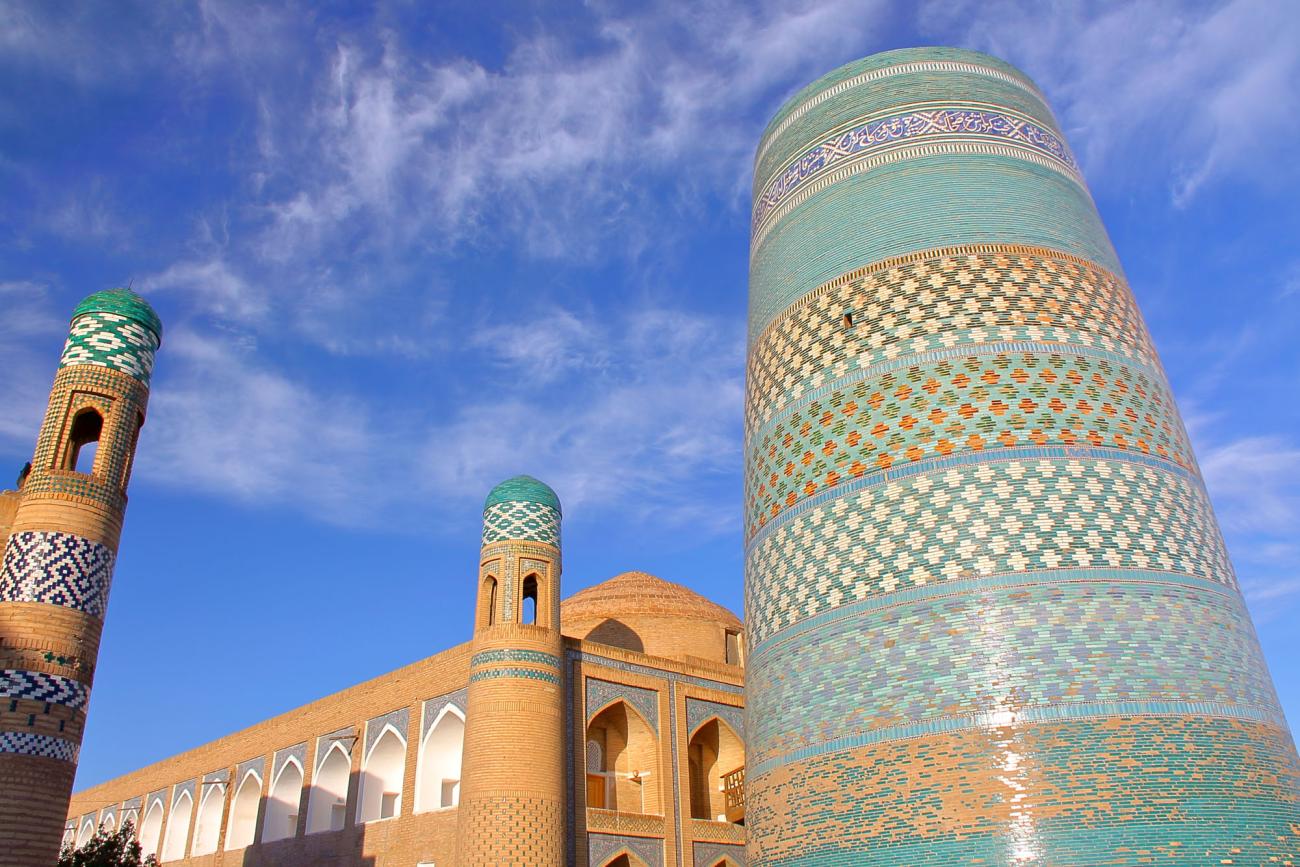
This minaret stands out somewhat compared to others. Its girth and brilliant blue colour make it as charming as it is awe-inspiring. Construction of the minaret began in 1851 under the orders of Mohammed Amin Khan. It's said that he wanted to build a minaret high enough to see all the way to Bukhara (over 400 km away!) but he died in 1855 before it could be finished. Supposedly, it should have been finished with a narrower top, reaching somewhere between 70 and 100 metres. Instead, it comes to 29 metres.
The blue tiles of the minaret really stand out. It has become a symbol of the city, making it an essential on anyone's sightseeing list. Don't miss seeking it out while you're in Khiva.
Pahlavon Mahmud

The Pahlavon Mahmud complex is a mausoleum built for the poet of the same name. Initially constructed in 1664, it began with an amazing dome built over the poet's grave. As well as being a poet in the 13th century, Pahlavon Mahmud was apparently known for his heroic strength and was a great wrestler. He was also respected for his ability to heal people, according to the myth surrounding him.
The site itself began as a modest mausoleum, but mosques and other structures were constructed as it started to become a popular pilgrimage site. Khiva Khans were also buried here in the 17th, 18th and 19th centuries. While here, you can observe cartouches featuring religious sayings and Mahmud's poetry. Plenty of beautiful tiling can be found around the complex too.
Nurullabay Palace
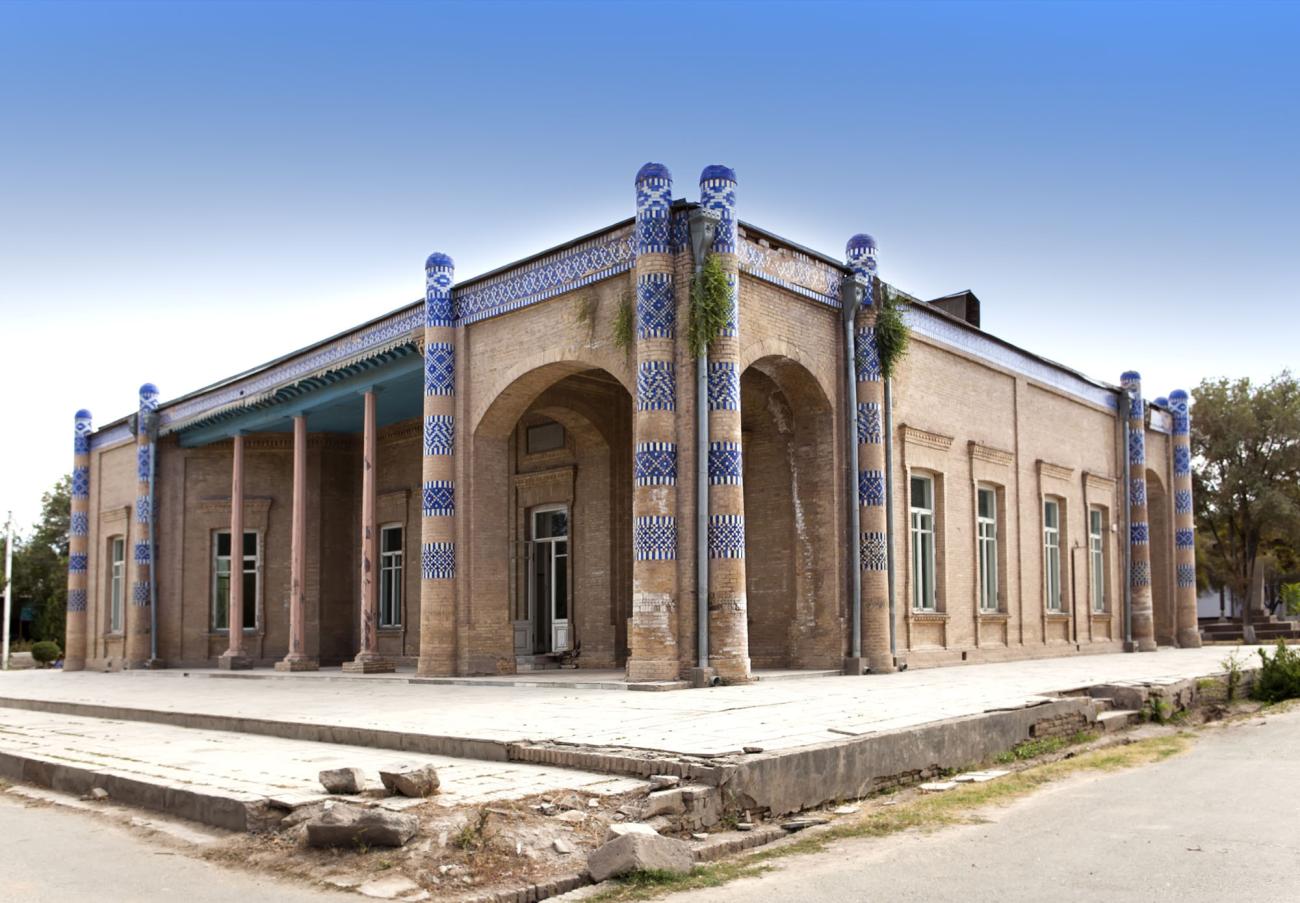
This architectural monument was formerly the official reception hall of Asfandiyar Khan, who was Khan of Khiva from 1910 to 1918. Built by his father, construction began in 1904 and was completed in 1912. Both local craftsmen and artists and specialists from Russia and Germany were involved in its design and construction. These different influences can be observed in the palace, including materials imported from St. Petersburg.
Reconstruction work took place at the palace more recently and was completed in 2017. Restored to its former glory, the palace is impressive both inside and out. The mix of styles includes a European reception hall and a mosque decorated with baked bricks and tiles. There's also a garden adjacent to the palace, which is surrounded by turreted walls.
Tashkent
As the country's capital, it's definitely worth stopping in Tashkent on any Uzbekistan Silk Road trip. The city has some wonderful museums, as well as a few notable sites if you're on the trail of ancient traders. It's a great place to learn more about the Timurid empire.
Teleshayakh Mosque

Part of the Hast Imam complex, this mosque is one of the largest in Tashkent. The complex features a winter building, a summer yard, a dome in the centre, and a dome gallery. Originally built in 1890 by Tillya Sheikh Ata, a sheep-selling merchant, it was gifted to the Muslims of Tashkent. The complex also includes the Barakkhana madrasah opposite and the Kaffalya Shashi Mausoleum to the north.
One of the main draws to the mosque is the eighth-century Quran, which is one of the oldest in existence. It can be seen in the museum when you visit. You can also find some places to buy local crafts around the complex.
Amir Timur Central Square
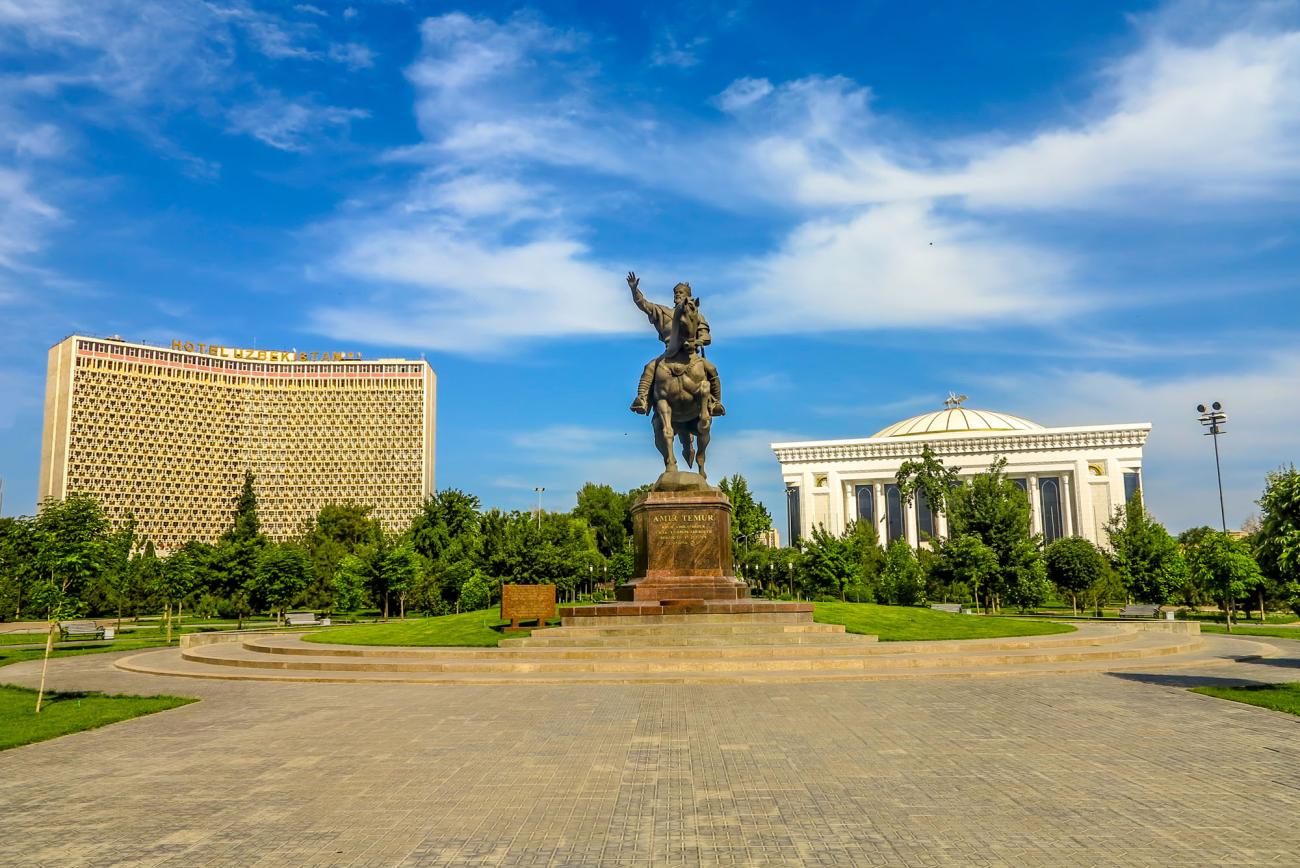
Amir Timur Square is the central town square in Tashkent. It's well worth exploring when you're in the city, especially as there are opportunities to explore both recent and ancient history. The square itself began with a park during the Russian Turkestan era. The square was renamed after the Russian Revolution and has hosted statues of Joseph Stalin and Karl Marx. After Uzbekistan gained independence, it was renamed Amir Timur Square in 1994 and Timur's statue was erected.
The Amir Timur Museum is found on the square and is dedicated to Tamerlane. More than 5,000 artefacts are in the museum collection. Exhibits explore Timur's genealogy, rise to power, military campaigns, and more.
Kokand
In the southern part of the Fergana Valley lies the city of Kokand, nicknamed the City of Winds. The city is at a crossroads between two major Silk Road routes, making it an essential stop if you're following the trail. One of the routes to the Fergana Valley goes to Tashkent via the mountains, while the other goes through Khujand.
Khan's Palace
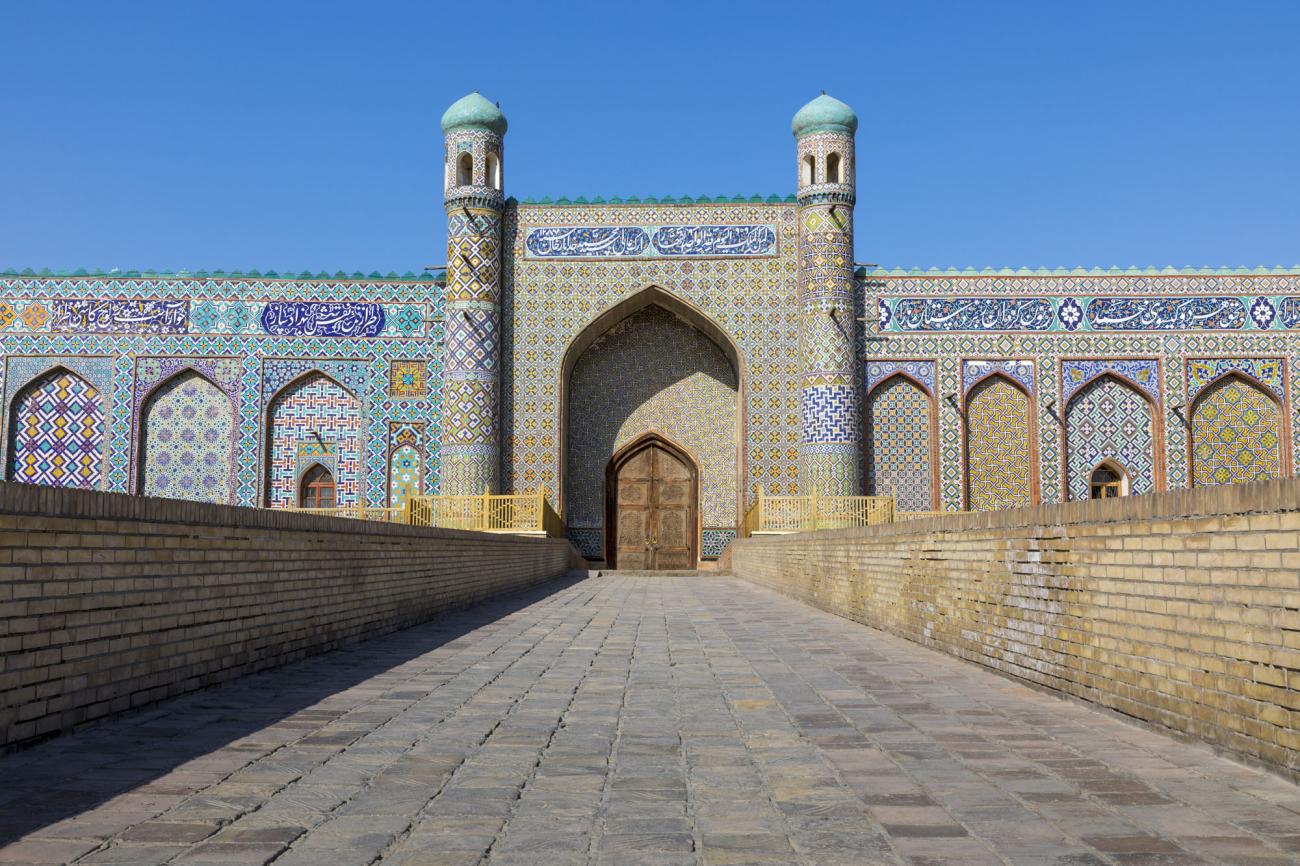
The Palace of Khudayar Khan is the one site you definitely have to visit while in Kokand. Built in the 1870s, it's one of seven grand palaces built at the time. It's another place that can give you an impression of slightly more modern Uzbek history, from the late 19th century into the 20th century. Khudayar Khan was forced to abandon the palace during the Russian Conquest of Central Asia after being forced into exile, and it was looted. In 1918, most of the 120 rooms were destroyed after Bolsheviks took control of the city. Only 19 rooms remained.
Renovations began in 1938 to restore the palace to its former glory. Further restorations have taken place in more recent years too and today you can visit it as a national monument and museum.
Termiz
Termiz (or Termez) is in southern Uzbekistan and is known for being the site of Alexander the Great's city Alexandria on the Oxus. It has also been a centre of early Buddhism, a Muslim pilgrimage site, and a base for Soviet Union military operations. It has also been the home of Old Termiz since ancient times.
Old Termiz
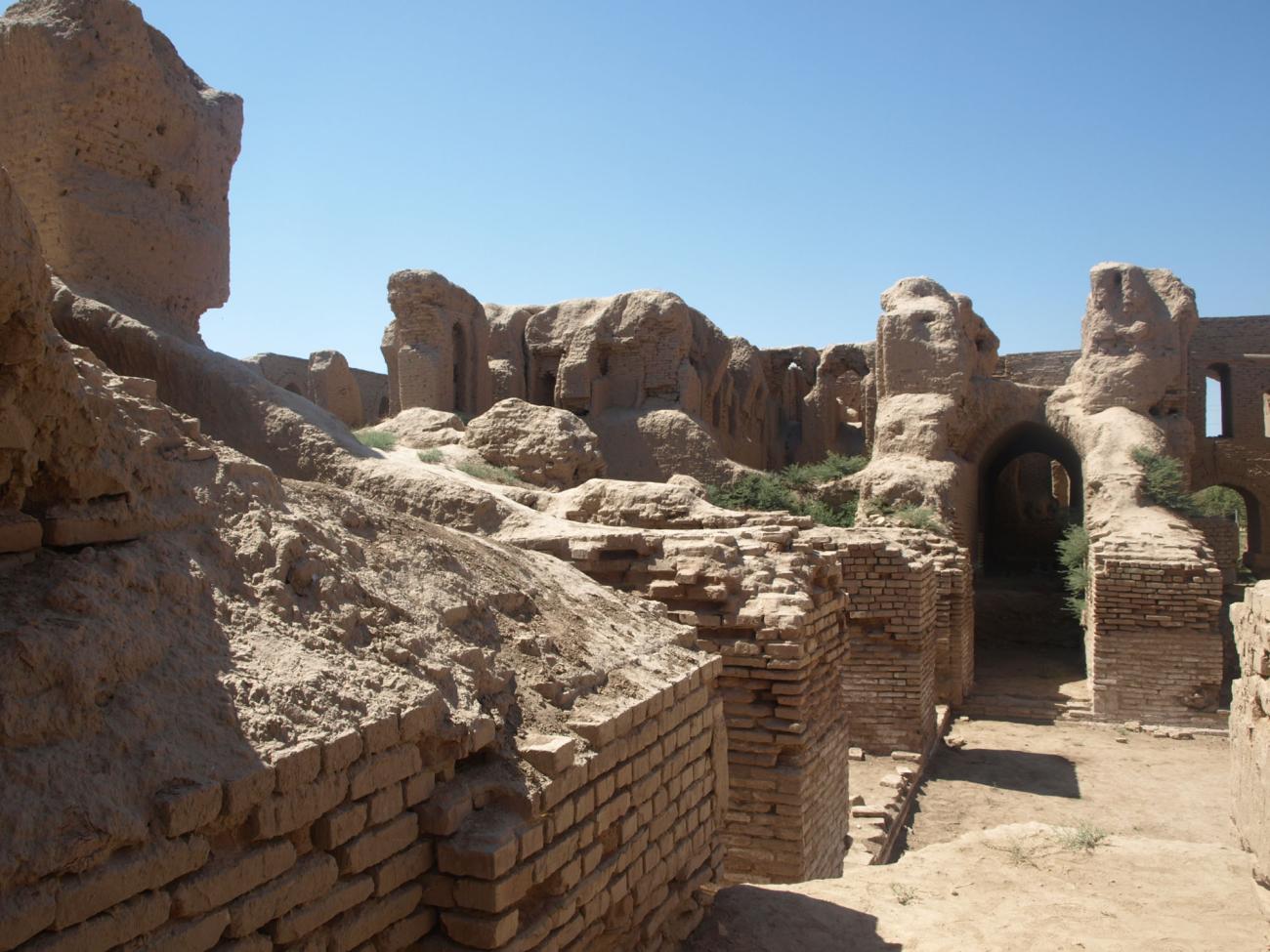
Old Termiz is just a few kilometres northwest of the city, on the Amudarya River. It is made up of a citadel, two shakhristans, and the suburb. There's much to see of Old Termiz that speaks of its history. You can find the remains of a Buddhist monastery, forts, and mediaeval mausoleums. After seeing the Buddhist Stupa of Zurmala, you could continue your visit by checking out the Mausoleum of Al Hakkim at-Termizi. Next to the mausoleum, you can explore underground chambers that have been used by Buddhist monks who lived and prayed there.
The old town is also close to the border with Afghanistan (which is why the Soviet Union used the city as a military base). From there, you can see over the border, even if you're not planning on crossing it.
Shakhrisabz
About 80 km south of Samarkand, the city of Shakhrisabz was once a major Central Asian city. Its main claim to fame today is as the birthplace of Timur. And it's Timur's life and history that you can explore while visiting the city. You will also find more stunning architecture and beautiful mosques that can't be missed.
Tamerlaine's Ak-Sarai Palace

This ruined palace might not be complete, but it's still an important stop if you want to learn more about Timur along your Silk Road journey. Timur was born near Shakhrisabz (called Kesh at the time) and wanted to make the city the capital of his empire, instead of Samarkand. He had the castle built here and it was completed in 1404, just before his death. However, it was destroyed by Abdullah Khan II, the then Khan of Bukhara in the 16th century.
Work began to conserve the ruins of the palace after Uzbekistan's independence. A statue of Timur was also erected on a pedestal on the site of the palace. Although no longer complete, the palace is still impressive to look at. The huge statue of Timur himself welcomes you at the gates and you can even ride a ferris wheel in the nearby park to get a great view of the site.
Kuk Gumbaz Mosque

The imposing Kuk Gumbaz Mosque is another essential site to stop at while in Shakhrisabz. The magnificent 15th-century mosque, with its brilliant blue dome, was built by Tamerlane's grandson Ulug Beg. With a design influenced by its Indian and Iranian designers, it features eye-catching tilework and both an impressive exterior and interior. There are tombstones for several important men here, including a spiritual advisor of Tamerlane's father and people claiming descent from Mohammad's grandson, Husain.
Kok Gumbaz means blue dome, and it's definitely the most prominent feature of the mosque. But there's also much more to see when you visit and even craft stalls to buy from in the pleasant exterior courtyard.
All of these Uzbekistan Silk Road sites will enrich your journey and exploration of the region and its history. Design your own tour or take a look at the Wild Frontiers tours available in Uzbekistan and other important countries along the Silk Road.
